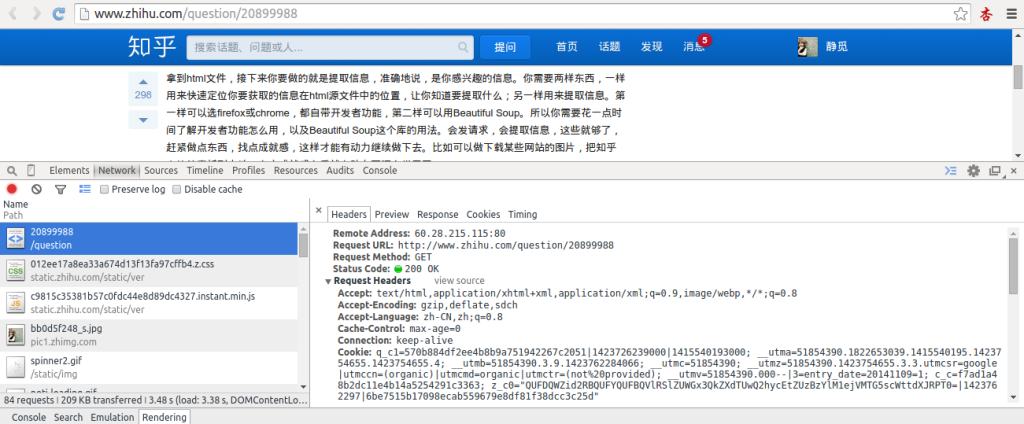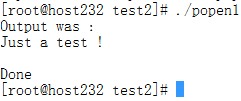Python闭包和装饰器用法实例详解
本文实例讲述了Python闭包和装饰器用法。分享给大家供大家参考,具体如下:
Python的装饰器的英文名叫Decorator,作用是完成对一些模块的修饰。所谓修饰工作就是想给现有的模块加上一些小装饰(一些小功能,这些小功能可能好多模块都会用到),但又不让这个小装饰(小功能)侵入到原有的模块中的代码里去。
闭包
1.函数引用
#coding=utf-8
def test1():
print('This is test1!')
#调用函数
test1()
#引用函数
ret = test1
#打印id
print('test1\t的地址:',id(test1))
print('ret\t\t的地址:',id(ret))
print('你会发现test1的地址和ret的地址是一样的!')
#通过引用调用函数
ret()
运行结果:
This is test1!
test1 的地址: 139879303947128
ret 的地址: 139879303947128
你会发现test1的地址和ret的地址是一样的!
This is test1!
1. 什么是闭包
在嵌套函数中,内部函数用到了外部函数的变量,则
称内部函数为闭包。
python中的闭包从表现形式上定义(解释)为:如果在一个内部函数里,对在外部作用域(但不是在全局作用域)的变量进行引用,那么内部函数就被认为是闭包(closure).
上代码:
#coding=utf-8
def outer(num):
def inner(num_in):
return num + num_in
return inner
#10赋值给了num
ret = outer(10)
#20赋值给了num_in
print('ret(20) = ',ret(20))
#30赋值给了num_in
print('ret(30) = ',ret(30))
运行结果:
ret(20) = 30
ret(30) = 40
闭包的应用例子一:
看代码:
#coding=utf-8
def line_conf(a, b):
def line(x):
return a*x + b
return line
line1 = line_conf(1, 1)
line2 = line_conf(4, 5)
print(line1(5))
print(line2(5))
运行结果:
6
25
这个例子中,函数line与变量a,b构成闭包。在创建闭包的时候,我们通过line_conf的参数a,b说明了这两个变量的取值,这样,我们就确定了函数的最终形式(y = x + 1和y = 4x + 5)。我们只需要变换参数a,b,就可以获得不同的直线表达函数。由此,我们可以看到,闭包也具有提高代码可复用性的作用。
如果没有闭包,我们需要每次创建直线函数的时候同时说明a,b,x。这样,我们就需要更多的参数传递,也减少了代码的可移植性。
闭包思考:
1.闭包似优化了变量,原来需要类对象完成的工作,闭包也可以完成。
2.由于闭包引用了外部函数的局部变量,则外部函数的局部变量没有及时释放,消耗内存。
代码如下:
#coding=utf-8
#定义函数:完成包裹数据
def makeBold(func):
def wrapped():
return "<b>" + func() + "</b>"
return wrapped
#定义函数:完成包裹数据
def makeItalic(fn):
def wrapped():
return "<i>" + fn() + "</i>"
return wrapped
@makeBold
def test1():
return "hello world-1"
@makeItalic
def test2():
return "hello world-2"
@makeBold
@makeItalic
def test3():
return "hello world-3"
print(test1())
print(test2())
print(test3())
运行结果:
<b>hello world-1</b>
<i>hello world-2</i>
<b><i>hello world-3</i></b>
装饰器(decorator)功能
1. 引入日志
2. 函数执行时间统计
3. 执行函数前预备处理
4. 执行函数后清理功能
5. 权限校验等场景
6. 缓存
装饰器示例
例1:无参数的函数
代码如下:
#coding=utf-8
from time import ctime, sleep
def time_func(func):
def wrapped_func():
print('%s call at %s'%(func.__name__, ctime()))
func()
return wrapped_func
@time_func
def foo():
print('i am foo!')
foo()
sleep(2)
foo()
运行结果:
foo call at Thu Aug 24 21:32:39 2017
i am foo!
foo call at Thu Aug 24 21:32:41 2017
i am foo!
例2:被装饰的函数有参数
#coding=utf-8
from time import ctime, sleep
def timefunc(func):
def wrappedfunc(a, b):
print('%s called at %s'%(func.__name__, ctime()))
print(a, b)
func(a, b)
return wrappedfunc
@timefunc
def foo(a,b):
print(a+b)
foo(3,5)
sleep(2)
foo(2,4)
运行结果:
foo called at Thu Aug 24 21:40:20 2017
3 5
8
foo called at Thu Aug 24 21:40:22 2017
2 4
6
例3:被装饰的函数有不定长参数
#coding=utf-8
from time import ctime, sleep
def timefunc(func):
def wrappedfunc(*args, **kwargs):
print('%s called at %s'%(func.__name__, ctime()))
func(*args, **kwargs)
return wrappedfunc
@timefunc
def foo(a,b,c):
print(a+b+c)
foo(3,5,7)
sleep(2)
foo(2,4,9)
运行结果:
foo called at Thu Aug 24 21:45:13 2017
15
foo called at Thu Aug 24 21:45:15 2017
15
例4:装饰器中的return
如下:
#coding=utf-8
from time import ctime
def timefunc(func):
def wrappedfunc():
print('%s called at %s'%(func.__name__, ctime()))
func()
return wrappedfunc
@timefunc
def getInfo():
return '---hello---'
info = getInfo()
print(info)
代码如下:
getInfo called at Thu Aug 24 21:59:26 2017
None
如果修改装饰器为 return func():
如下:
#coding=utf-8
from time import ctime
def timefunc(func):
def wrappedfunc():
print('%s called at %s'%(func.__name__, ctime()))
return func()
return wrappedfunc
@timefunc
def getInfo():
return '---hello---'
info = getInfo()
print(info)
代码如下:
getInfo called at Thu Aug 24 22:07:12 2017
---hello---
总结:
一般情况下为了让装饰器更通用,可以有return
例5:装饰器带参数,在原有装饰器的基础上,设置外部变量
#coding=utf-8
from time import ctime, sleep
def timefun_arg(pre="hello"):
def timefunc(func):
def wrappedfunc():
print('%s called at %s'%(func.__name__, ctime()))
return func()
return wrappedfunc
return timefunc
@timefun_arg('hello')
def foo1():
print('i am foo')
@timefun_arg('world')
def foo2():
print('i am foo')
foo1()
sleep(2)
foo1()
foo2()
sleep(2)
foo2()
运行结果:
foo1 called at Thu Aug 24 22:17:58 2017
i am foo
foo1 called at Thu Aug 24 22:18:00 2017
i am foo
foo2 called at Thu Aug 24 22:18:00 2017
i am foo
foo2 called at Thu Aug 24 22:18:02 2017
i am foo
可以理解为:
foo1()==timefun_arg("hello")(foo1())
foo2()==timefun_arg("world")(foo2())
例6:类装饰器
装饰器函数其实是这样一个接口约束,它必须接受一个callable对象作为参数,然后返回一个callable对象。在Python中一般callable对象都是函数,但也有例外。只要某个对象重载了 call() 方法,那么这个对象就是
callable的。
class Test():
def __call__(self):
print('call me!')
t = Test()
t() # call me
类装饰器demo:
class Decofunc(object):
def __init__(self, func):
print("--初始化--")
self._func = func
def __call__(self):
print('--装饰器中的功能--')
self._func()
@Decofunc
def showpy():
print('showpy')
showpy()#如果把这句话注释,重新运行程序,依然会看到"--初始化--"
更多关于Python相关内容可查看本站专题:《Python数据结构与算法教程》、《Python Socket编程技巧总结》、《Python函数使用技巧总结》、《Python字符串操作技巧汇总》及《Python入门与进阶经典教程》
希望本文所述对大家Python程序设计有所帮助。

